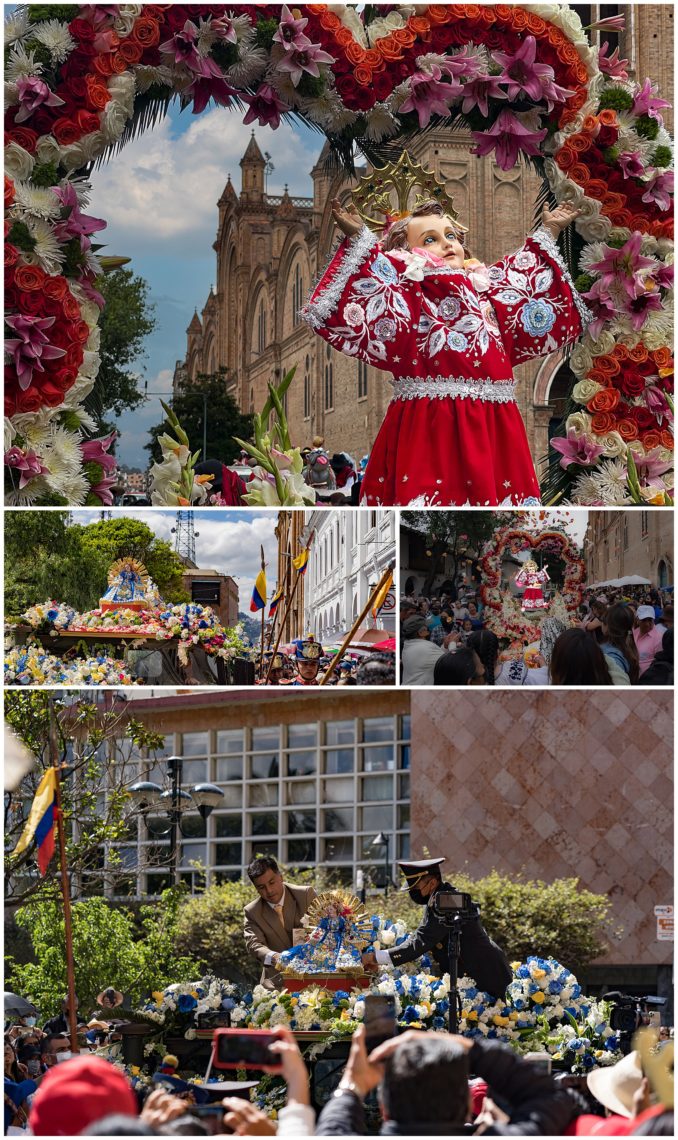
The Christmas Eve Pase del Niño Viajero parade used to be massive, lasting for 8 hours and involving at least 20% of the city’s citizens. COVID put a sudden and unexpected stop to the continued growth of this parade in 2019, with the parade being forbidden in both 2019 and 2020. Last year, in 2021, only a truncated part of the parade was allowed by city officials. Though the government said that 2022 would allow a full return to normal, many people still fear COVID, and the parade was significantly reduced from pre-pandemic levels. In fact, this year the parade started at least an hour late, and was mostly finished early afternoon, though the newspapers reported there were 100,000 participants and spectators.
One aspect that has started to return, is the preponderance of smaller parades in the days before and after Christmas Eve. Groups from surrounding areas come to join the main parade on Christmas Eve, and they create their own smaller, spontaneous (or at least unannounced…) parades with family, friends, and neighbors. These parties and parades continue until the start of Carnaval, which is February 21, 2023 this year.
One thing these parades all have in common is that they are led by a statue of the Baby Jesus doll. The official Baby Jesus doll, for whom the original parade was created, is seen above dressed in blue (bottom), receiving royal treatment from the military and religious leaders, and adored by hundreds who crowd around.
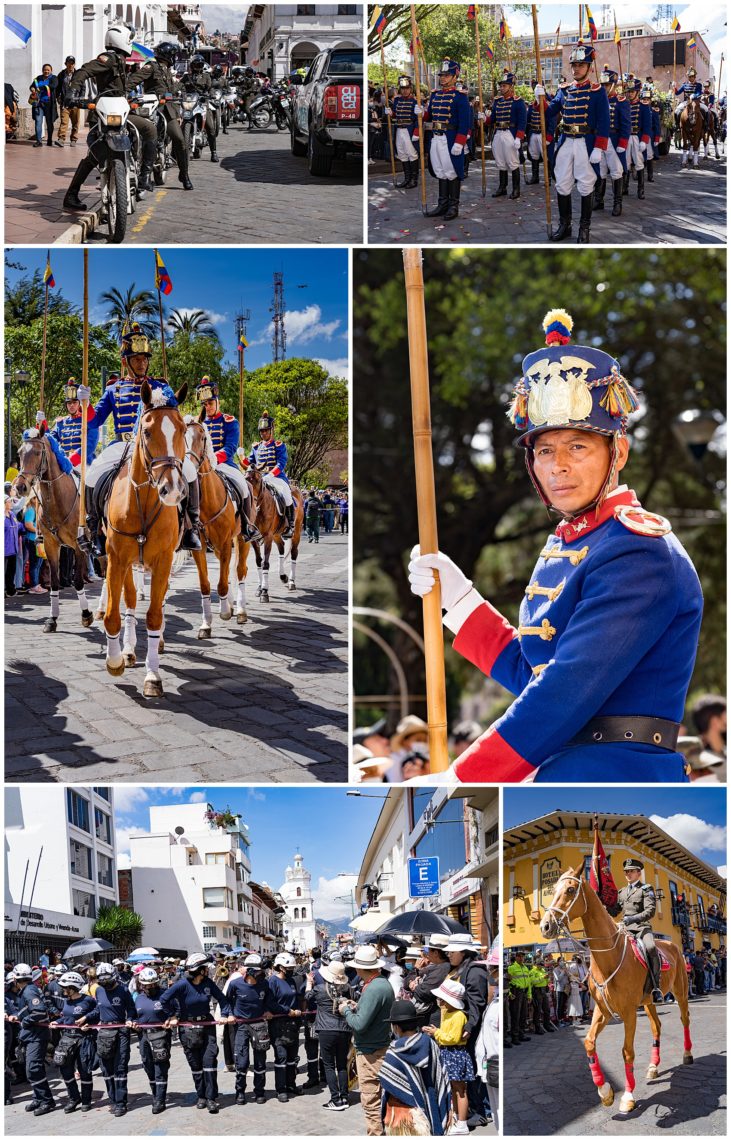
Whenever the official Baby Jesus doll is on parade, the military and police act as official escorts. Parts of the Ecuadorian army, the Granaderos de Tarqui, wear their ceremonial dress uniforms (upper-right plus center row). A group of first-responders has the honor of clearing the streets of onlookers ahead of the parade (lower-left).
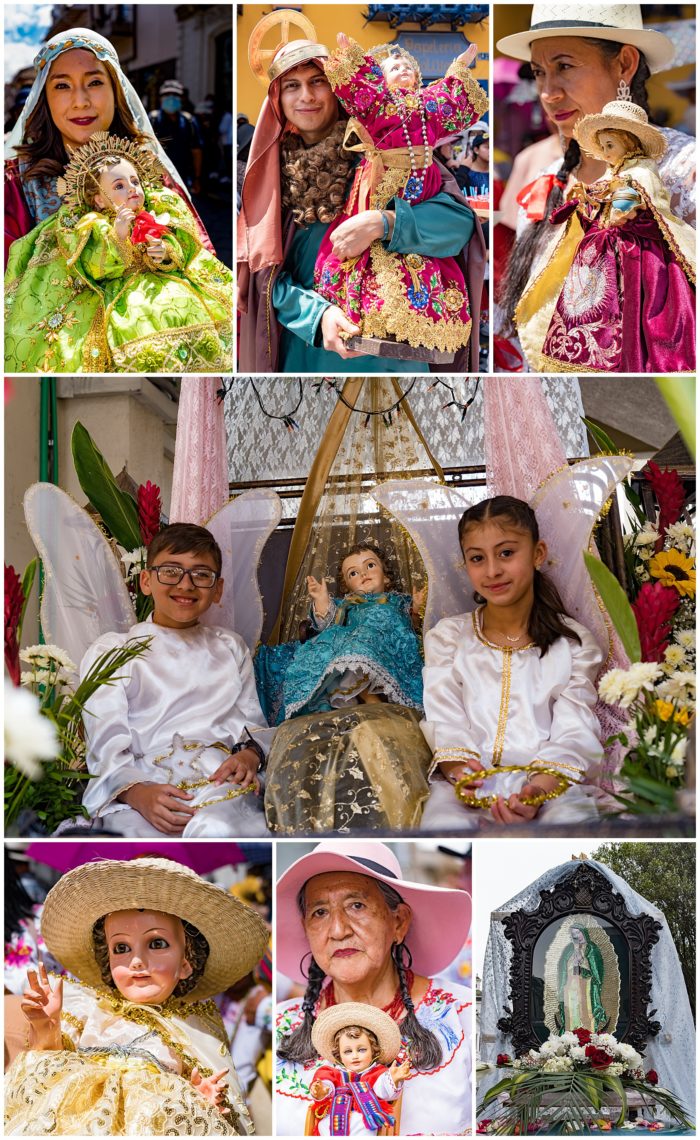
Many families have their own Baby Jesus dolls at home, which they bring out to walk along the parade route.
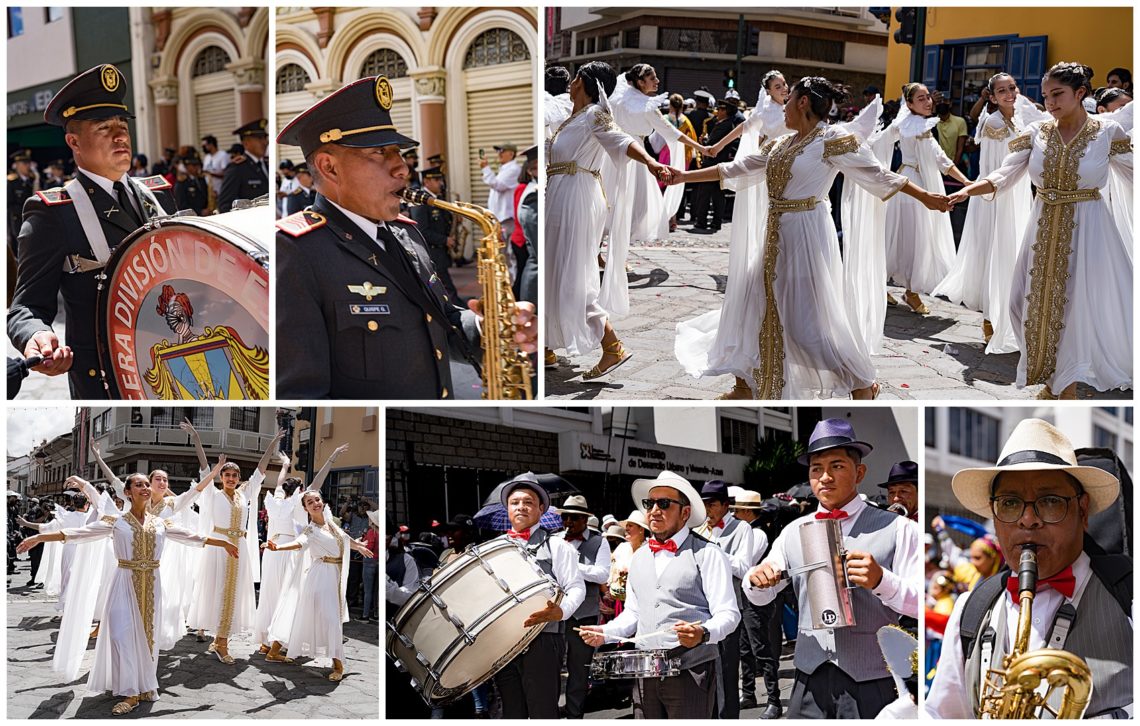
Music and dance are always a major part of any parade, and this was no different. Military bands are always included (upper-left and upper-center), along with other local marching bands (lower-center and lower-right). And, of course, there are always dancing groups. In the Christmas parade, many of the dancers are dressed as religious-themed dancers (top-right and lower-left) or in traditional clothing identifiable from local villages .
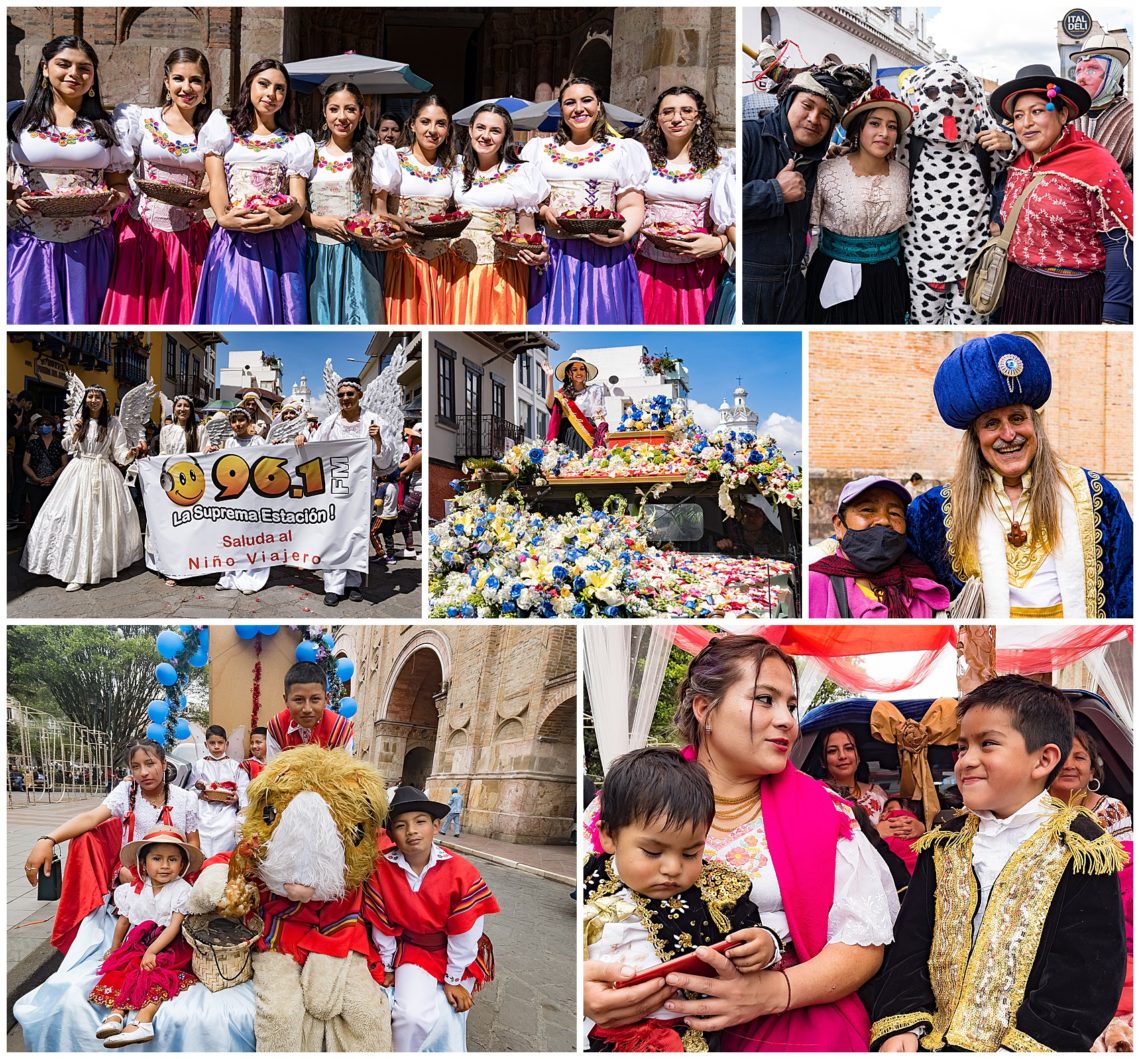
Many people participate as groups, sometimes on floats, sometimes on horseback, and often just walking together. One expat who always shows up is Peter Dudar (center-right), who has become a fixture of Cuenca and of these parades, and is often seen on horseback as one of the 3 Kings.
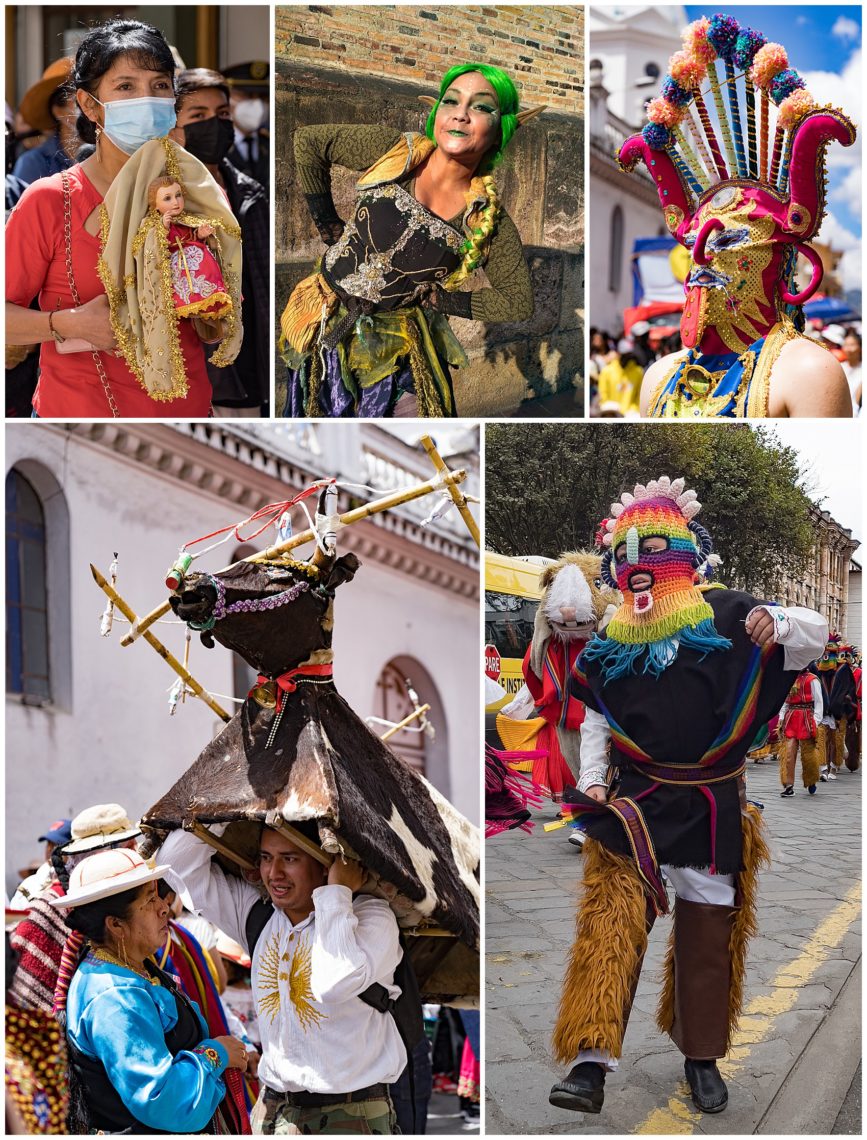
A great variety of people and groups participate in the parade, including educators, students, dance troupes, church groups, local neighborhoods, adjacent villages, activists, and many more. These people often don costumes that relate to either the Jesus birth story, traditions of local villages (el vaca loco aka the crazy cow – lower-left), or to indigenous Ecuadorian diablo human dancers who exorcise the demons (lower-right).
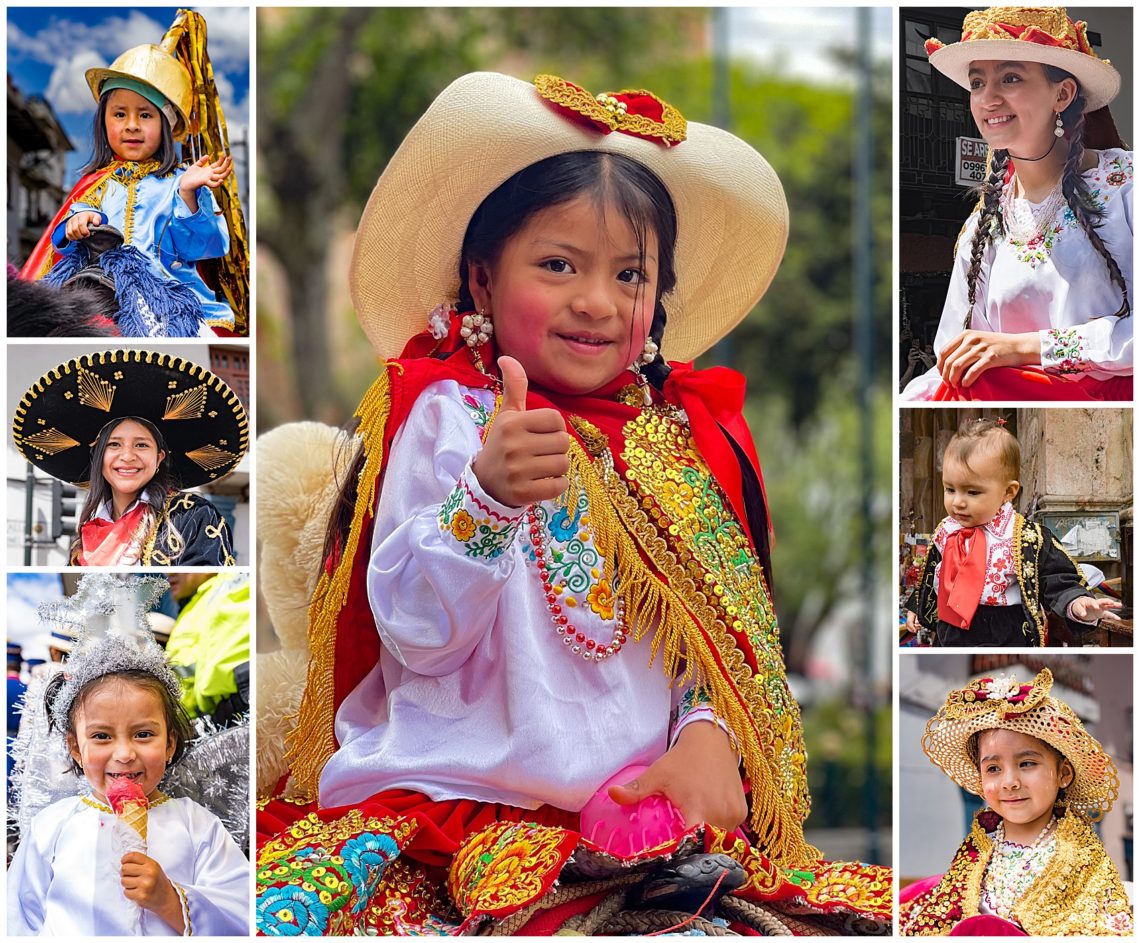
Above all, these parades are for the children and they are adorably cute. They join the parades by the hundreds, all in traditional costumes, even when they are too young to really understand what all the fuss is about (middle-right).
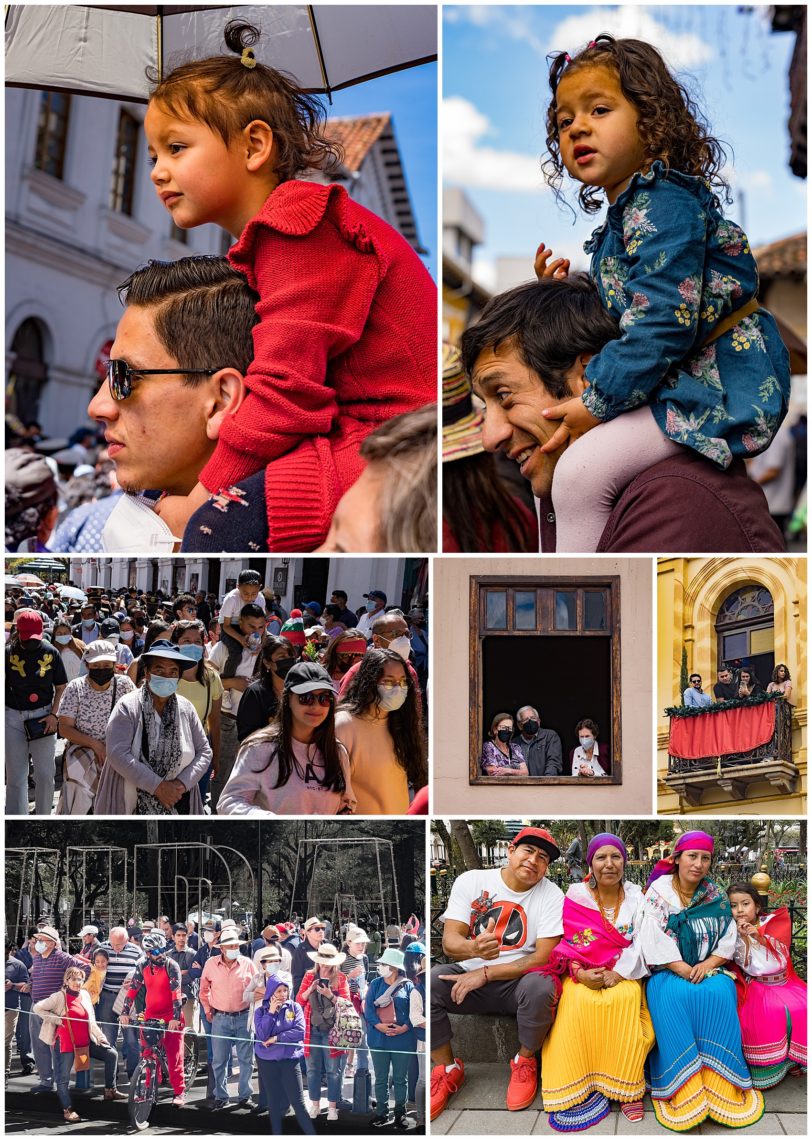
We always enjoy watching the audience watching these parades. Children watching from their fathers’ shoulders is common (upper row), as are people watching from their balconies (center and center-right).
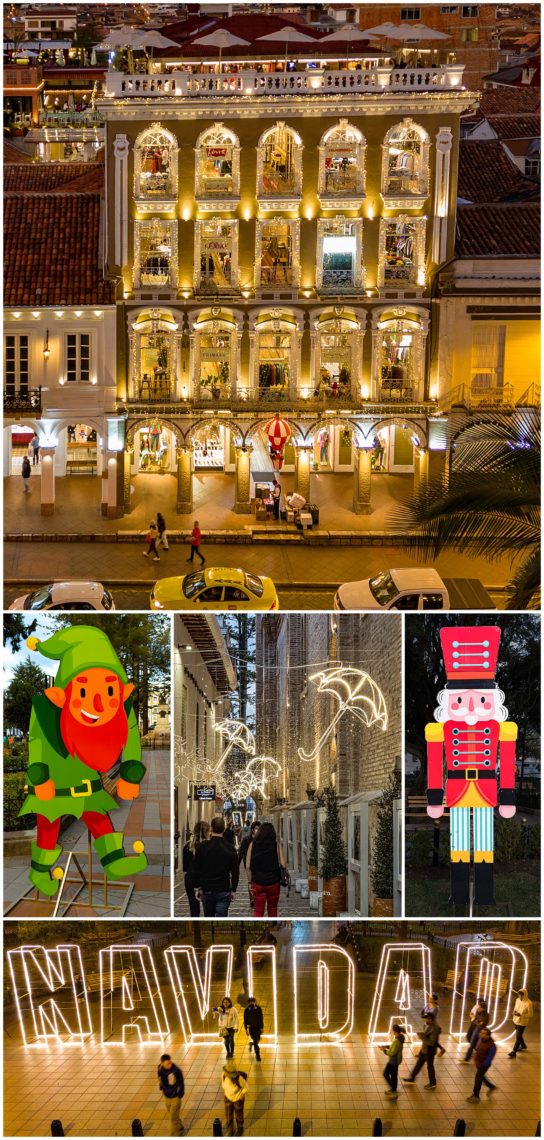
In past years, we have often neglected to photograph what else is going on around town during the Christmas season. We resolved to change that this time, which was actually pretty easy since all the scenes above were within a few feet of Parque Calderon, in the heart of Cuenca.
Above is an 85 second quick peek at what the parades looked like this year.